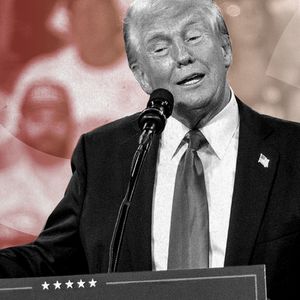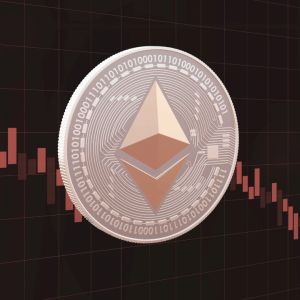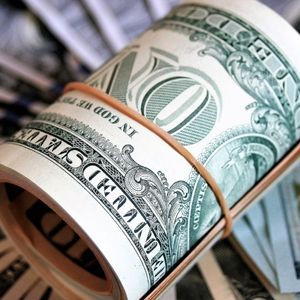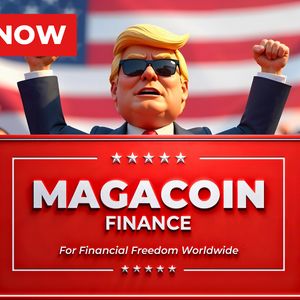BitcoinWorld Revolutionary NFT ETF: CBOE Files for Pudgy Penguins Fund Get ready for a seismic shift in the world of digital assets! The Chicago Board Options Exchange (CBOE) has just made a groundbreaking move, filing a 19b-4 application for the first-ever NFT ETF directly linked to the iconic Pudgy Penguins collection and its associated PENGU token. This isn’t just another headline; it’s a monumental step that could redefine how we approach crypto investment and bring the vibrant world of non-fungible tokens into the mainstream financial arena. What Does CBOE’s Bold Move Mean for Cryptocurrency ETFs? For those closely watching the evolution of digital finance, the name CBOE carries significant weight. As one of the largest exchange operators globally, CBOE’s involvement lends immense credibility to any financial product it backs. Their filing of a 19b-4 application with the U.S. Securities and Exchange Commission (SEC) is the crucial first step towards launching an exchange-traded fund (ETF). Essentially, this application is a proposal to change exchange rules to allow the listing and trading of a new product. We’ve seen the impact of Cryptocurrency ETFs with the recent approvals of spot Bitcoin and Ethereum ETFs, which opened the floodgates for institutional and retail investors to gain exposure to digital assets without directly owning the underlying cryptocurrencies. An NFT ETF takes this concept a step further, applying it to a unique, often illiquid, and highly speculative asset class. This move by CBOE signals a growing comfort and demand from traditional finance for diversified exposure to the crypto ecosystem, moving beyond just foundational cryptocurrencies. Think about it: owning a physical NFT can be complex, involving digital wallets, understanding blockchain networks, and navigating marketplaces. An ETF simplifies this immensely, allowing investors to gain exposure through a regulated, familiar vehicle traded on a traditional stock exchange. This could be a game-changer for accessibility. Unpacking the Appeal of Pudgy Penguins and Digital Asset Investment So, why Pudgy Penguins ? Among the myriad of NFT collections, Pudgy Penguins has emerged as a blue-chip project, renowned for its strong community, distinctive artwork, and successful brand expansion. Launched in 2021, these charming, cartoonish penguin avatars quickly gained popularity, evolving into a lifestyle brand with physical toys, merchandise, and a significant presence in Web3 culture. Their success story is a testament to the power of community and intellectual property in the digital realm. The proposed ETF’s link to Pudgy Penguins NFTs and the PENGU token is particularly interesting. While the exact structure of how the ETF will track these assets is yet to be fully detailed, it likely aims to provide diversified exposure to the collection’s value and perhaps the broader ecosystem built around it. This represents a significant leap in Digital asset investment , moving from direct ownership of individual NFTs to a more aggregated, diversified investment product. For many, the idea of investing in NFTs still feels abstract or too risky. An ETF, however, could democratize access, allowing investors to participate in the potential growth of high-value NFT collections without the complexities of direct ownership, custody, or the high entry price of individual rare NFTs. It’s about bridging the gap between niche digital collectibles and mainstream financial portfolios. How Will This NFT ETF Transform Crypto Investment? The potential approval of an NFT ETF could have profound implications for crypto investment . Here are a few key benefits and transformations we might see: Increased Accessibility: Millions of investors who currently shy away from direct crypto or NFT ownership due to perceived complexity or regulatory uncertainty could now gain exposure through their existing brokerage accounts. This dramatically broadens the investor base. Diversification within Digital Assets: An ETF could offer a diversified basket of NFTs, mitigating the risk associated with investing in a single, highly volatile collection. While this specific filing targets Pudgy Penguins, its success could pave the way for ETFs tracking broader NFT indices. Regulatory Clarity and Legitimacy: SEC approval, if granted, would bestow a significant level of legitimacy upon NFTs as an investable asset class. This could encourage more institutional participation and foster greater trust in the digital asset market. Price Discovery and Liquidity: A publicly traded ETF could improve price discovery for the underlying NFTs by creating a new, regulated avenue for valuation and trading. It might also indirectly enhance liquidity for the NFT market by increasing overall demand and interest. Mainstream Adoption: The mere existence of an NFT ETF on a major exchange like CBOE would push NFTs further into the public consciousness, normalizing them as a legitimate component of the financial landscape. This development mirrors the trajectory of Bitcoin ETFs, which, once approved, led to significant capital inflows and increased market maturity. While NFTs present unique challenges, the precedent set by crypto ETFs suggests a similar positive trajectory for institutional adoption and investor confidence. Navigating the Hurdles: Challenges for the First NFT ETF While the prospect of an NFT ETF is exciting, it’s crucial to acknowledge the significant hurdles it faces. The SEC has historically been cautious with novel financial products, especially those tied to highly volatile and less-regulated markets. Here are some of the challenges: Valuation Complexity: Unlike traditional stocks or even cryptocurrencies with relatively straightforward market prices, NFTs are unique and often illiquid. Valuing an entire collection like Pudgy Penguins, let alone individual pieces within it, for daily ETF pricing is a complex task. How will the ETF’s net asset value (NAV) be accurately determined and updated in real-time? Custody and Security: Securing high-value NFTs is paramount. The ETF would need robust, secure custody solutions to protect the underlying digital assets from hacks, theft, or loss. This is a specialized area that traditional custodians are still adapting to. Market Volatility and Liquidity: The NFT market is notoriously volatile and can experience rapid price swings. Furthermore, many NFTs are illiquid, meaning they cannot be easily bought or sold without significantly impacting their price. An ETF needs sufficient liquidity in its underlying assets to manage creations and redemptions effectively. Regulatory Scrutiny: The SEC will meticulously scrutinize the application for investor protection, market manipulation concerns, and the overall structure. The lack of a clear regulatory framework specifically for NFTs adds an extra layer of complexity. Intellectual Property Rights: The ownership and usage rights associated with NFTs are still evolving. An ETF would need clear legal frameworks to ensure it can manage and utilize the underlying IP effectively, especially if the fund aims to generate revenue beyond just price appreciation. These challenges are not insurmountable, but they require innovative solutions and clear communication with regulators. The approval process could be lengthy, and the final product might look different from initial expectations. The Future Landscape of Digital Assets and Beyond If approved, this pioneering NFT ETF could usher in a new era for Digital asset investment . Its success might pave the way for similar funds tracking other blue-chip NFT collections, or even broader NFT market indices. Imagine an ETF that offers exposure to the entire metaverse economy, or funds focused on tokenized real estate, art, or music rights. The possibilities are vast. This move also underscores a broader trend: the convergence of traditional finance and Web3. As blockchain technology matures, we can expect more innovative financial products that bridge these two worlds, making complex digital assets accessible to a wider audience. The future of investment is increasingly digital, and initiatives like CBOE’s NFT ETF are crucial steps in that evolution. It’s not just about investing in JPEGs; it’s about recognizing the underlying technology and the cultural shift that NFTs represent. They are a new form of digital ownership, community building, and brand engagement. An ETF would acknowledge this value proposition within a regulated financial product. Conclusion: A New Horizon for Investors The CBOE’s filing for an NFT ETF tied to Pudgy Penguins is more than just a news item; it’s a landmark event that signifies the maturation of the digital asset space. While the road to approval may be long and fraught with regulatory challenges, this bold step by a major exchange like CBOE signals an undeniable shift towards mainstream acceptance of NFTs as a legitimate investment class. It promises to unlock new avenues for crypto investment , offering unprecedented accessibility and potentially reshaping the landscape of digital asset investment for years to come. Keep a close eye on this development; it could very well be the beginning of a revolutionary chapter in finance. To learn more about the latest digital asset investment trends, explore our article on key developments shaping cryptocurrency ETFs institutional adoption. This post Revolutionary NFT ETF: CBOE Files for Pudgy Penguins Fund first appeared on BitcoinWorld and is written by Editorial Team



















